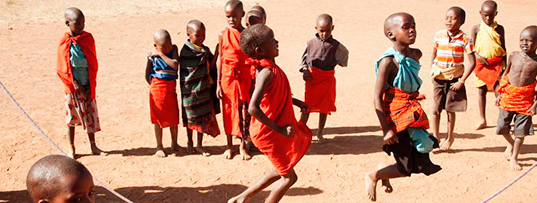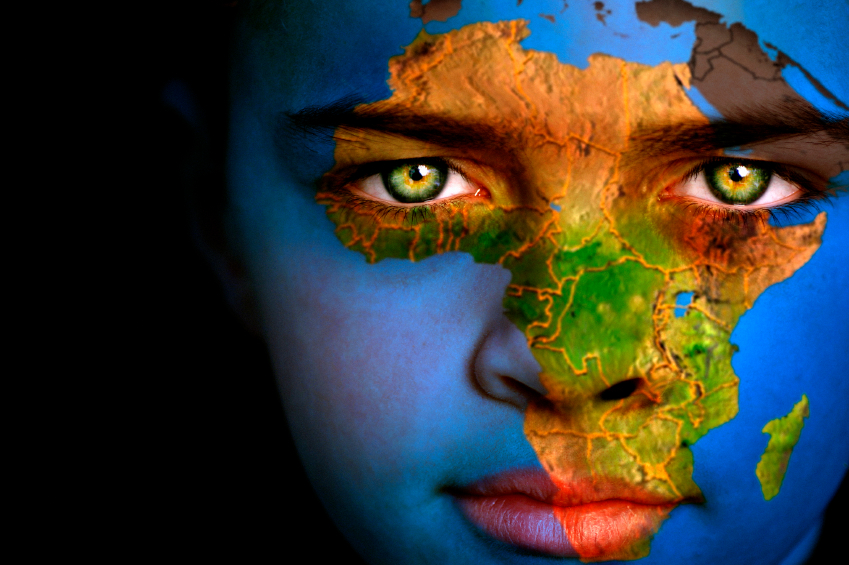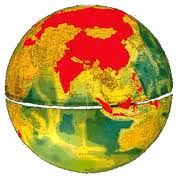
|
A community of up to 2,000 can benefit from a single waterhole, built by local labor for $25,000. Help us reach our $25,000 fund raising goal to construct one reservoir. We have raised $10,000 so far.
Please Give Now:

|
 |
|
The Water Challenge Video
|
|

On January 16, 2012 our group climbed Mt Kilimanjaro in Tanzania, the highest peak on the continent of Africa, and the tallest free standing mountain on earth to fundraise for a water reservoir for the Samburu people and wildlife in Northern Kenya. We then visited the Ol Malo project and founding director of the Samburu Trust, Julia Francombe, to learn more about her incredible work for the Samburu people who have been severely impacted by Kenya's drought. I invite you to read more about a nonprofit dedicated to working with the Samburu people to secure their land, its wildlife and shared future.
I was extremely fortunate to spend an impressionable part of my childhood growing up in Kenya, East Africa which continues to have a profound impact on my life, work and spiritual journey. At the age of 10, I remember staring at the magnificent ice cap of Kilimanjaro while on regular family safaris in the Amboselli Game Reserve and longing to climb it. It had a lot more snow then and, due to climate change, today its ice cap is forecast to disappear entirely within 20 years.
With the increasing spotlight on Africa for business and community development, I longed to return to Kenya despite fear and trepidation that my treasured memories would be shattered. I decided that it was important to go back with a social purpose which is how "Climb Kilimanjaro for Water" was created.
Along with fellow trip organizer Christine Barker, it was important to select a cause that was tangible and could have impact among a plethora of initiatives addressing social and humanitarian issues in Africa. We selected water as a priority concern.
My associate Dominique Callimanopulos at Elevate Destinations introduced us to Julia Francombe, daughter of Colin and Rocky Francombe, who own a private ranch called Ol Malo in the North Western region of Kenya. Julia created the Samburu Trust in 2000, in response to Kenya experiencing the worst drought in living memory which has impacted the health and livelihoods of the Samburu people.
The Samburu, quite distinct from the Masai, are semi-nomadic pastoralists who herd mainly cattle but also keep sheep, goats and camels. The name they use for themselves is Lokop or Loikop, a term that implies to them as "owners of the land" ("lo" refers to ownership, "nkop" is land). The Samburu move with their herds of cattle, sheep and goats in search of pasture and water.
After a fairly smooth flight from Nairobi to Liosaba we embarked on an extremely rocky and bumpy hour and a half road trip to Ol Malo. We were greeted by Rocky Francombe and an absolutely breath taking view of Kenya's Northern Frontier District from the edge of a rugged escarpment where Ol Malo sits on the end of the Laipikia Plateau.

Built, owned and managed by Colin and Rocky Francombe, with the help of the Samburu people, Ol Malo is built out of natural local materials sculpted into a luxury lodge along the edge of a rocky hillside. Slated pathways wind down to four private rock and olive wood cottages. Every attention has been paid to detail, privacy and value of self reflection in the dreamy backdrop of the African plains. About 20 or so elephant were taking water from a reservoir in the distance while the adopted family pet Kudu strolled in to join us for our buffet lunch.
|

While Julia was in transit from Nanyuki, Colin had arranged for us to visit a local Samburu settlement known as a manyatta. A manyatta may consist of only one family, a man and his wife/wives. Each woman has her own house, which she builds with the help of other women out of local materials, such as sticks, mud and cow dung. Large ritual settlements, known as lorora, may consist of 20 or more families. Settlements comprise housing two or three families, with 5-6 houses built in a circle with an open space in the middle. The circle is surrounded by an acacia thorn bush fence and the center of the village keeps animal pens safe from predators.
|

They are people both proud and protective of their culture and the ancestral lands to which it binds them. Their settlements are positioned in areas of beauty, while they also give great attention to their physical appearance, color and adornment.The Samburu, wearing Shukkas wrapped around their waists, arrange their hair into elaborate plaits and wear hand crafted beaded jewelry which is produced by the women.
|

We were in for a treat as the male Samburu warriors performed their traditional dance with considerable vertical leaps, encouraged by the cries of other warriors, while the young Samburu women watched from the side lines joining in with their rhythmic chanting as appropriate. The chants and dances signify the blessing of cattle, preparation for war and victory in a hunt.
|

When I was living in Kenya, it was very difficult and oftentimes not allowed to take pictures or video of the Masai or Samburu. We were careful to ask permission and they were absolutely fascinated by the cameras often giggling at pictures of themselves and actually encouraging us to take more.
|
We were invited inside into a dark and smoky manyatta and sat next to a fire, while our guide Luya explained the process for preparing a staple diet of milk and blood which was being mixed in a gourd by one of the Samburu wives. Curious children would pop in bringing more sticks for the fire and reach out to hold our hands, accompanied by chickens.
Sitting in the warmth of the fire of the Francombe's intimate living room, Julia arrived with her daughter and dogs, Cindy and Foxy right behind her. A courageous, fearless leader and visionary, it is of course no co-incidence that Julia climbed Kilimanjaro at the age of 14 and spent the nights in caves.
Julia and her family have developed a remarkable charity, the Samburu Trust, working in an area of approximately 1 million acres whose path follows the migratory people and wildlife within the Waso ecosystem, representing a troubled community of 26,400 people with considerable issues to address.
The 2000 drought resulted in the Samburu people of Northern Kenya losing 80% of their livestock. As herds recovered, they were hit by successive droughts in 2006 and 2009. Changing weather patterns, over-saturation of livestock and land mismanagement have triggered repeated emergencies of food security, poverty and tribal conflict.
Woken by a most dazzling sun rise and three rare Stone Partridge birds on the window sill, Julia took us on a tour to show us the priority project areas, reservoirs and school settlements. Little did we know that we would be put to a water challenge later on in the day.

As we drove into the trust area, several Samburu women were sitting around the property making jewelry out of the beadwork - another business set up under the Samburu Trust. Ol Malo designs produces beadwork that supports the Samburu directly.
Today, the trust runs several programs including educating children through a network of nomadic schools, eradicating trachoma, improving general health, protecting wildlife and providing sustainable water for the livestock, wildlife and people who are an integral part of the ecosystem.
Julia took us to the first ever location for a reservoir - Matasia.

"This was the first group of Samburu women I got to know, Cheeky Dermaris, Mama Biaso. I spent days with them at home and was shocked by the distance they had walked to get water. The women would walk 3-4 hours every two days to get unclean, polluted water," said Julia.
Julia took action and built the first reservoir - Matasia Reservoir - which has been a great success, providing water for more than 10,000 head of cattle during the drought. The water lasts for up to 3 months.
Julia's close association with the Samburu has enabled the Trust make a continuous and accurate assessment of theneeds of the people, its culture, wildlife and the environment through the creation of dedicated programs. She has also been able to achieve this with the help of her Samburu Manager - Munytaki Liokitop.
"I have made some mistakes and tried to push projects. My vision is that the projects are designed by the Samburu for the Samburu - we work hand in hand with them. Our plan for 100 years and beyond our lifetime" said Julia.
We had the honor of being invited to have tea in her managers Manyatta, meet one of his wives, Kiliwas, who just had a baby girl and mingled with children who have trachoma. Julia is spending a lot of time providing education about trachoma and how to prevent it which continues to be a great challenge.
We were then escorted to another dam next to a water troff surrounded by cattle, where Christine and I were tasked with our water challenge - carrying water from the reservoir to the car and over a brick wall. Despite our mountain fitness, it was a challenge to say the least. After about 10 minutes, we could not carry the potable container any further and were humbled by how heavy a container of water was - 20 litres. It is Julia's goal to reduce the time carrying water from 3 hours to half an hour.

In addition to the reservoirs, Julia has created two schools, Ol Malo and Kalwalash, with two teachers per school where 50 children attend per school and plans to build more. These schools are very unique in that they are owned and run by the tribal elders - following the Kenyan curriculum - they also include song and dance, are earthy and organic.
"Our vision was to have a Naitengen - translated means an area where knowledge is passed - knowledge to read, knowledge of the land and water, the cattle, culture and wildlife in which the Samburu people live," said Julia.
On an early morning horseback ride, I got to see the children participate in a dance before start of school. These lucky children get to go to school and learn the value of water, including washing their hands and faces.
Julia had a little surprise for us at the the end of the day, she showed us the exact location for the new reservoir that we are fund raising for - to be built to the left of the big rock.
"New Site: Ol Donyo Lotim"
Julia has a very aggressive 10 year plan and many compelling programs to support her dream and vision. The provision of water is essential for success. There are plans to build 120 open water reservoirs over a ten year period, thereby providing clean water within a 30 minute walk of every Samburu homestead. Open water reservoirs are a sustainable water supply, preventing erosion and providing people, their livestock and wildlife access to safe, clean water.
Now that's an added incentive and satisfaction that my memories of Kenya were not shattered but sharpened by its beauty, cultural diversity and soul that has something to teach us all.
By Sam Taylor
sam@reputation-dynamics.com
212 979 6092













 While corporate responsibility and sustainability (CR) continues to fuel radical change in business and philanthropic models, reputation management and employee engagement, CR alone is not enough to mitigate pressing social issues and consequences of climate change. Despite contributions from the private and public sector, the social, cultural and environmental circumstances of populations in under-developed markets remain complex and unsustainable.
A recap of the daunting realities we face include:
While corporate responsibility and sustainability (CR) continues to fuel radical change in business and philanthropic models, reputation management and employee engagement, CR alone is not enough to mitigate pressing social issues and consequences of climate change. Despite contributions from the private and public sector, the social, cultural and environmental circumstances of populations in under-developed markets remain complex and unsustainable.
A recap of the daunting realities we face include:
















 As multinational companies continue to explore growth opportunities in an economic downturn, emerging economies are dominating the strategic agenda and boardroom discussions.
As multinational companies continue to explore growth opportunities in an economic downturn, emerging economies are dominating the strategic agenda and boardroom discussions.